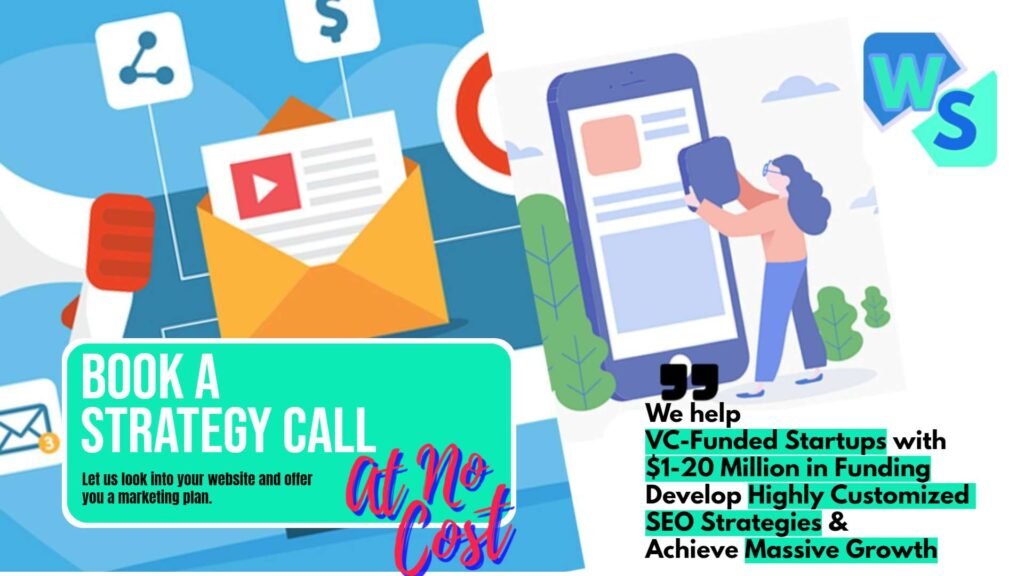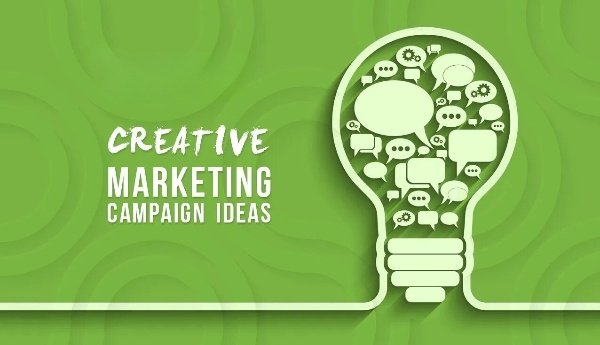In the world of digital marketing, content is still king. But as more brands flood the internet with posts, articles, and videos, the question is no longer “How much content should we create?” but “What kind of content drives the most return on investment?” For CEOs focused on maximizing ROI, this answer is clear: quality trumps quantity every time.
In this article, we’ll dive into why content quality matters more than sheer volume and how focusing on high-value content can boost engagement, build trust, and drive revenue. From crafting articles that resonate deeply with your audience to creating videos people want to share, we’ll explore actionable strategies that prioritize quality for sustainable growth.
1. Understanding the Power of Quality Content for Long-Term Growth
When it comes to content marketing, more isn’t always better. High-quality content doesn’t just attract readers; it keeps them engaged, encourages them to come back, and inspires them to take action. A single, well-crafted article can attract more attention and conversions than dozens of poorly written posts. High-quality content acts as an asset for your brand, adding long-term value, building authority, and strengthening your relationship with customers.
Quality content also has a greater shelf life. While quantity-focused strategies can create temporary traffic spikes, quality pieces generate consistent engagement over time, making them a better investment for long-term growth.
Action Insight: Shift your focus from how much content you’re producing to how valuable it is to your audience. Ask yourself, “Is this content worth sharing? Does it address real needs?” This mindset shift can change how your brand is perceived and improve ROI.
2. Defining What Quality Content Really Means
Quality content doesn’t just mean good grammar and clear formatting. High-quality content is relevant, actionable, and provides real value to its audience. For CEOs, quality content should align with the company’s goals and solve genuine problems for customers. It should educate, inform, or inspire, leaving the reader with something they didn’t have before.
This kind of content is often in-depth and well-researched, but that doesn’t mean it has to be lengthy. The key is to focus on content that resonates with your target audience and delivers something valuable. This approach makes it more likely that readers will engage, share, and remember your brand.
Action Insight: Create a content guideline that defines what quality means for your brand. Include aspects like relevance to audience pain points, actionable insights, and clarity. Use these guidelines as a benchmark to ensure all content meets your quality standards.
3. Building Trust with Authoritative Content
When people trust your content, they trust your brand. Quality content builds credibility, which is crucial for long-term customer relationships. By providing well-researched, reliable information, you position your brand as an authority in your industry. This authority not only attracts readers but also encourages them to choose your products or services over competitors.
For example, a B2B software company that publishes well-researched case studies or expert guides positions itself as a go-to resource for industry insights. This level of trust makes customers more likely to turn to the company when they’re ready to make a purchase decision.
Action Insight: Focus on creating authoritative content, such as case studies, research reports, and expert articles. Back up claims with data and credible sources. When readers see you as a reliable source, they’ll be more inclined to engage with and share your content, building trust and, ultimately, driving conversions.
4. Focusing on Content That Solves Real Problems

Quality content goes beyond general advice and addresses specific problems your audience faces. Content that solves real issues resonates with readers, making it far more engaging and effective. When your content helps people overcome challenges, it positions your brand as genuinely helpful and knowledgeable, fostering a connection with your audience.
For instance, a fitness brand might create a comprehensive guide on overcoming common workout mistakes. By addressing a real problem, the content becomes more valuable to readers, making it more likely to be shared and referenced. This leads to higher engagement and increased brand loyalty.
Action Insight: Identify the top pain points of your audience and create content that provides actionable solutions. Use surveys, customer feedback, and social listening to understand these challenges. Content that directly addresses customer needs has a higher chance of driving conversions and delivering strong ROI.
5. Using Data-Driven Content to Maximize Impact
In today’s digital landscape, data-backed content performs better than opinions or vague statements. Quality content relies on credible statistics, case studies, and examples that reinforce your points and make your message more persuasive. Data-driven content also tends to rank higher on search engines, as it demonstrates authority and provides valuable, factual information.
For example, an article on improving email marketing campaigns can cite statistics on open rates, click-through rates, and conversion rates to support its recommendations. Data-driven content not only improves readability but also builds credibility, making it more impactful and likely to convert.
Action Insight: Invest in data sources and tools that provide accurate insights for your content. Tools like Statista, Google Trends, or even customer data from your CRM can provide valuable data points. Data-backed content increases your brand’s authority and gives readers confidence in your expertise, improving engagement and ROI.
6. Optimizing for Search Intent Rather Than Keywords Alone
SEO is crucial for content visibility, but a keyword-focused approach can lead to shallow content. Instead, focus on search intent—the “why” behind the search. Understanding search intent allows you to create content that answers users’ questions thoroughly, which is what Google and other search engines prioritize.
For instance, if users search for “how to improve team productivity,” they’re likely looking for practical tips rather than a general overview. By addressing the intent behind the search, you provide the depth users need, improving both rankings and engagement. This approach brings in visitors who are genuinely interested, leading to higher conversions and better ROI.
Action Insight: Use tools like Google’s People Also Ask or AnswerThePublic to understand search intent. Focus your content on solving the intent behind keywords rather than just including keywords. When you align content with user intent, it attracts more qualified visitors, leading to better engagement and conversions.
7. Enhancing Engagement with Interactive Content

Interactive content, such as quizzes, calculators, or assessments, offers a more engaging experience than static text. Quality content isn’t just about providing information—it’s about creating an experience. Interactive elements capture users’ attention and encourage them to stay on your site longer, increasing the likelihood of conversion.
For example, a financial planning firm might offer a “Retirement Savings Calculator” as part of a blog post. Users engage with the tool, which helps them feel more connected to the content. Interactive content enhances the quality of user experience, making it more memorable and shareable, which boosts ROI.
Action Insight: Incorporate interactive elements in your content where relevant. Use tools like Typeform or Outgrow to create quizzes, calculators, or assessments that align with your audience’s needs. Interactive content not only keeps users engaged but also improves your chances of capturing leads.
8. Repurposing Quality Content to Maximize Reach and ROI
Repurposing high-quality content allows you to get more mileage from what you’ve already created. Rather than constantly creating new content, focus on amplifying the reach of your best pieces by turning them into other formats. For example, a popular blog post can be transformed into a video, infographic, or email newsletter.
Repurposing saves time and resources while extending the value of existing content. It allows you to reach different segments of your audience, maximizing the ROI of each high-quality piece without additional content creation costs.
Action Insight: Identify your top-performing content pieces and repurpose them across multiple channels. For example, turn a successful blog post into a LinkedIn article, video, or email series. Repurposing keeps quality content alive and accessible, allowing you to reach a wider audience at minimal cost.
9. Investing in Visual Content to Enhance Readability and Appeal
Visual content like infographics, images, and videos add depth and appeal, enhancing user experience and increasing retention. High-quality content combines well-written text with visually engaging elements that make information easier to digest. Visuals also improve readability and are more likely to be shared, further extending the reach and impact of your content.
For instance, a complex process can be illustrated with an infographic, making it more understandable and engaging. Video, meanwhile, has become a powerful tool for explaining concepts and building a personal connection with your audience. Investing in high-quality visuals supports both engagement and brand perception.
Action Insight: Include high-quality visuals in every content piece. Invest in a consistent style for graphics or videos to make your content visually cohesive and recognizable. Visual content supports your written message, improving readability and shareability, which ultimately enhances ROI.

Related: Check out our free SEO suite

10. Building a Content Strategy Focused on Quality Over Quantity
A scattered approach to content can dilute quality. Instead of publishing as much content as possible, develop a content strategy that prioritizes quality, consistency, and audience needs. By focusing on a smaller number of high-quality pieces that align with your brand goals, you ensure that each piece of content contributes to your long-term strategy and ROI.
A focused content strategy also allows you to allocate more resources to each piece, whether it’s for research, visuals, or promotion. This increases the likelihood that each piece will make an impact, driving engagement and conversions.
Action Insight: Create a content strategy that prioritizes your audience’s needs and aligns with your business goals. Set a schedule that emphasizes quality and depth, focusing on creating a few impactful pieces rather than overwhelming volume. A strategic, quality-focused content plan maximizes the effectiveness of each post, leading to sustainable ROI.
11. Measuring ROI from Quality Content
To see the real impact of quality content, it’s essential to track ROI. Metrics like time on page, bounce rate, engagement rate, and conversions are critical indicators of how well your content resonates. Quality content doesn’t just drive traffic; it leads to measurable actions, whether that’s signing up for a newsletter, sharing an article, or making a purchase.
For instance, if a high-quality blog post has a low bounce rate and high time-on-page, it’s engaging readers effectively. If it also leads to conversions, that’s a clear indicator of ROI. Regularly tracking these metrics allows you to refine your content strategy based on what performs best, ensuring continuous improvement.
Action Insight: Set up content-specific tracking in Google Analytics or your preferred analytics tool. Focus on engagement and conversion metrics to gauge the effectiveness of your quality-focused strategy. By measuring the impact of each piece, you can make data-driven decisions to optimize for even higher ROI.
12. Investing in Thought Leadership to Establish Brand Authority
In a saturated content landscape, thought leadership can set your brand apart. Thought leadership content includes industry insights, future trends, and in-depth analysis that positions your brand as a go-to resource. For CEOs, investing in thought leadership isn’t just about gaining followers—it’s about building trust and credibility that directly influences buying decisions.
Thought leadership goes beyond basic “how-to” content. It demonstrates expertise and fosters a reputation for innovation and insight. When done well, it attracts a high-value audience, as readers seeking thought leadership are often decision-makers and industry influencers themselves.
For example, publishing a report on emerging trends in your industry or offering commentary on shifts in market dynamics can attract attention from executives and key stakeholders. This leads to stronger brand recognition and attracts more qualified leads.
Action Insight: Encourage your team to produce thought leadership pieces that showcase your brand’s expertise and insights. Use original research, interviews, or case studies to offer unique perspectives. Thought leadership builds authority, deepens audience trust, and attracts high-value leads, making it a strategic investment in ROI.
13. Promoting Content Strategically to Amplify Reach and Impact

Quality content needs the right promotion to reach its full potential. A solid distribution strategy ensures that your high-quality content doesn’t just sit unnoticed on your website. By using various promotion channels—such as social media, email marketing, and partnerships—you can extend the reach and lifespan of your best pieces, maximizing their impact and ROI.
For example, a valuable industry report can be shared through LinkedIn groups, featured in email newsletters, and promoted through strategic partnerships with industry websites. Strategic promotion amplifies the content’s visibility and enhances its value, as more people engage with it.
Action Insight: Develop a content promotion plan for each piece of high-quality content. Share across multiple channels, considering paid options if the piece is highly valuable. Amplifying reach increases engagement and the likelihood of conversions, maximizing the ROI of each piece of quality content.
14. Balancing Evergreen Content with Timely Topics for Consistent Traffic
Evergreen content, which remains relevant over time, provides ongoing value and draws in consistent traffic. By balancing evergreen content with timely or seasonal pieces, you create a content portfolio that captures both long-term and immediate audience interest. Evergreen content continues to drive traffic and conversions months or even years after it’s published, offering excellent ROI.
For instance, a guide on “Best Practices in Remote Team Management” is likely to stay relevant for years and can be a constant source of engagement. On the other hand, a blog post about “Upcoming Industry Trends for 2024” captures short-term interest but establishes your brand as a current industry player.
Action Insight: Maintain a content calendar that includes both evergreen and timely topics. Aim to have a solid base of evergreen pieces that continuously attract traffic, supplemented by timely content that engages your audience with current issues. This balance ensures your content strategy delivers consistent results and maximizes ROI.
15. Engaging in Continuous Content Optimization for Sustained Performance
Publishing high-quality content is only the beginning. Continuous optimization keeps content fresh, relevant, and effective, extending its lifespan and maximizing ROI. By regularly updating content with new data, revising old information, or improving SEO, you can sustain the performance of your best pieces over time.
For example, a popular article that ranks well for a specific keyword may drop in rankings over time if competitors publish newer, more detailed information. Refreshing it with updated statistics, current examples, or enhanced visuals keeps it competitive, ensuring it continues to attract traffic and engagement.
Action Insight: Implement a quarterly review process to update top-performing content. Revise outdated information, add new insights, and improve SEO where necessary. Consistently optimized content retains its value, ensuring ongoing traffic and conversions without creating new content from scratch.
16. Building Community Engagement Around High-Quality Content

Content that engages readers can foster a sense of community around your brand. When readers feel connected, they’re more likely to comment, share, and return for future updates. High-quality content that sparks discussion and interaction goes beyond driving clicks—it creates a loyal audience that engages over time.
For instance, consider adding a comments section to blog posts or engaging with readers on social media. When users see that you value their feedback and encourage conversation, they’re more likely to return, creating a community of loyal followers who amplify your brand message.
Action Insight: Encourage interaction on high-quality content by prompting questions or offering discussion points. Respond to comments and engage with readers to create a welcoming, interactive environment. Building a community around your content deepens audience loyalty and increases the chances of repeat engagement, leading to stronger ROI.
17. Aligning Content Quality with the Customer Journey
To maximize ROI, content quality should align with every stage of the customer journey—from awareness to decision-making. By tailoring high-quality content to each phase, you nurture leads effectively, guiding them toward conversion with relevant, valuable information.
For example, awareness-stage content might include educational blog posts that introduce solutions to common pain points, while decision-stage content could feature case studies or product comparisons that provide the final push toward purchase. This alignment ensures that high-quality content supports each step in the customer journey, enhancing ROI by moving leads smoothly through the funnel.
Action Insight: Map out the customer journey and create content that addresses each stage, from initial awareness to final decision. Tailor your content’s tone, depth, and call-to-action to fit each phase. Aligned, quality content drives engagement and conversions at every stage, creating a seamless path to ROI.
Final Thoughts: Elevating Your Brand with Quality Content
Content is more than a marketing tool; it’s a reflection of your brand’s values, expertise, and commitment to its audience. As a CEO, focusing on quality over quantity is a strategic investment that pays off by building lasting relationships, boosting brand authority, and driving sustainable growth. High-quality content may take more time and resources to create, but it yields far greater returns in engagement, trust, and conversions.
By prioritizing quality—through well-researched insights, valuable problem-solving, and engaging experiences—you’re not only maximizing ROI but also setting your brand apart in a crowded digital landscape. This approach ensures that every piece of content you publish works harder and goes further, making your marketing investments truly count.
In a world where content overload is the norm, quality is your competitive edge. By focusing on creating meaningful, impactful content, you’re not just generating clicks; you’re creating connections that lead to real business growth.
READ NEXT:
- Are Vanity Metrics Killing Your Marketing Efficiency? Here’s What to Track Instead
- Pinpointing Digital Marketing ROI: Why Your Metrics Aren’t Telling the Full Story
- Unlocking Real ROI in Digital Marketing: The Hidden Costs Draining Your Budget
- How Misaligned Marketing Funnels Are Blocking Your ROI Potential
- Best Digital Marketing Agency In Santa Ana, California
- Best Digital Marketing Agency In San Francisco, California





















Comments are closed.